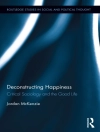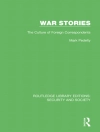In less developed countries (LDCs) there is considerable concern that the developments in the Central and Eastern European Countries (CEECs) may lead to a more inward looking European Union (EU). As EU trade, foreign investment and aid flows are diverted from LDCs towards the CEECs, close neighbours of the EU, a new dimension would be added to ‘fortress Europe’. This volume consists of 11 chapters by scholars from the EU, the CEECs and LDCs. Each paper is discussed in terms of its policy relevance by a policy maker as well as by an academic specializing in the field. In the opening chapter we aim to do justice to the discussion during the Workshop in Rotterdam in May 1994 at which preliminary versions of all chapters were presented. Edited versions of the interventions by the policy makers and experts are included as far as possible after the chapters. A summary of the discussion is presented in the concluding remarks by Rolf Langhammer. The opinions expressed in this volume are those of the authors and not necessarily of their organizations. The editors XXI Foreword I am glad the first meeting of this network is on the developing country dimension of pan-European integration, for two reasons. Firstly, politi- cal and economic liberalization in Central and Eastern Europe makes it possible, even necessary, to discuss such an issue.
A. Kuyvenhoven & Olga Memedovic
Transition in Central and Eastern Europe [PDF ebook]
Implications for EU-LDC Relations
Transition in Central and Eastern Europe [PDF ebook]
Implications for EU-LDC Relations
购买此电子书可免费获赠一本!
语言 英语 ● 格式 PDF ● ISBN 9789400916142 ● 编辑 A. Kuyvenhoven & Olga Memedovic ● 出版者 Springer Netherlands ● 发布时间 2012 ● 下载 3 时 ● 货币 EUR ● ID 4591320 ● 复制保护 Adobe DRM
需要具备DRM功能的电子书阅读器












